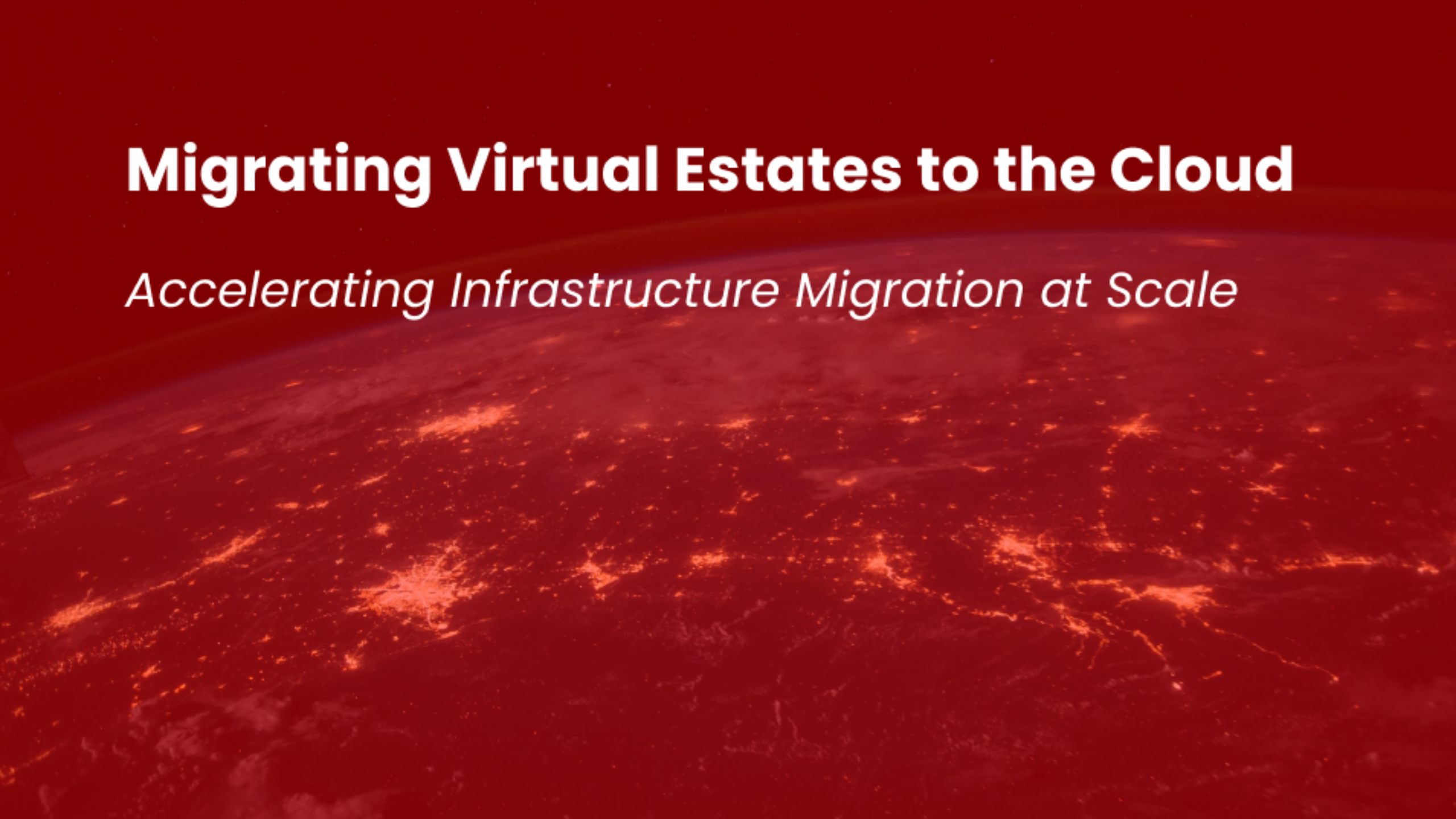
Migrating Virtual Estates to the Cloud
Migrating Virtual Estates to the Cloud
Accelerating Infrastructure Migration at Scale
Accelerating Infrastructure Migration at Scale
Moderator
Panelists
Leveraging existing investments in people-process and tools
At Oracle’s recent virtual thought leadership event, Migrating Virtual Estates to the Cloud: Accelerating Infrastructure Migration at Scale, a select group of IT and infrastructure leaders in the financial services industry, and IT panelists came together to share their thoughts on:
• Operating the IT environments of financial services in the cloud
• Assessing tools, processes, and policies that ease and quicken the migration journey
• Implementing security-first design strategies and architecture to reduce risk and manage compliance in regulatory environments
• Leveraging existing investments in people-process and tools
• Operating at scale and with agility while maintaining continuity throughout your cloud migration
Access the Full
Content Here:
Access the Full Content Here:
Leveraging existing investments in people-process and tools
At Oracle’s recent virtual thought leadership event, Migrating Virtual Estates to the Cloud: Accelerating Infrastructure Migration at Scale, a select group of IT and infrastructure leaders in the financial services industry, and IT panelists came together to share their thoughts on:
• Operating the IT environments of financial services in the cloud
• Assessing tools, processes, and policies that ease and quicken the migration journey
• Implementing security-first design strategies and architecture to reduce risk and manage compliance in regulatory environments
• Leveraging existing investments in people-process and tools
• Operating at scale and with agility while maintaining continuity throughout your cloud migration
Access the Full
Content Here:
Access the Full Content Here:
Key Panel Takeaways
Key Panel Takeaways
As organizations migrate to the cloud, IT teams can be left confused about how to properly transition to remote environments. With the help of a streamlined infrastructure, this transition can be the answer to not only an easy migration, it can also help reduce costs, avoid attacks and security threats, and give full visibility to the team and cloud in question.
On April 7, Oracle virtually gathered a panel of experts to discussMigrating Personal Estates to the Cloud: Accelerating Infrastructure Migration at Scale, and how organizations can have full control over their infrastructure, security, and information.
Check out a few takeaways from our discussion on the 7th:
1. Regulations and compliance in the cloud
One of the most challenging prospects of moving to the cloud can be regulations and data requirements.Troy Ligon of Incomm spoke about his company’s mindset of being prepared for any kind of regulation.
“I usually tell folks that if there’s a regulatory compliance framework out there then one or another of our products falls under it,” he said. “We have to comply with a lot of different platforms, so moving into the cloud definitely causes a lot of angst.”
2. Providing customers with private cloud tools along with outside knowledge
“Yes, your team members need to be able to continue to learn, but if you have a good knowledge base on operating tools and models, you should be able to take those things with you,” said VJ Costanzo, of VMWare on working with customers to share data. “It’s really resonating with customers to have a huge investment in private cloud tools.”
While adding another “tool” can seem cumbersome, the idea of it should be that one addition actually removes another unnecessary tool, making the entire operation more streamlined.
3. Going on the attack using red teams and preventative measures
Jim Parkinson of North American Bandcard spoke about the unpopular part of security: more red teams, more external attack and input, and continuing to find holes in the way a company defends itself from attacks.
“You just have to be willing to do that stuff,” he said. “Because engineers are not going to get there on their own, and I think it all ends up fitting together to make the issue more manageable.”
4. Benefitting from control over cloud security
While discussing control over security planes and third party vendors, Troy was clear about the benefits of having control over his own encryption keys and other bonuses to steering the boat on security decisions while still enjoying the extra help.
“My orders can be a lot firmer than they would be if I’m having to say, well let me go download the data station from the cloud vendor and include it in my report,” he said. “This way I have total control of all that, and it allows me to bring [the data] with me.
5. Ensuring the shift from cloud to cloud using outside vendors
“All the clouds have drugs: if you start taking them, you can’t get off of them,” Jim said. “You have to make sure that the stuff you’re using is not only going to work on one cloud. I think the movement in vendor supplied software is making sure that there will be a way to shuffle it around.”
As the industry evolves, third party vendors can be the answer to clouds that don’t interchange easily, making what used to be a hard to wean off process an easy transition.
Curious to learn more about our discussion with Oracle and our expert panelists? Access the full event content by filling out the form at the top of this page.
Preview the Highlights
04/07 Migrating Virtual Estates to the Cloud







Preview the Highlights
04/07 Migrating Virtual Estates to the Cloud







About the Sponsor

Oracle offers suites of integrated applications plus secure, autonomous infrastructure in the Oracle Cloud. For more information about Oracle (NYSE: ORCL), please visit us at oracle.com.



